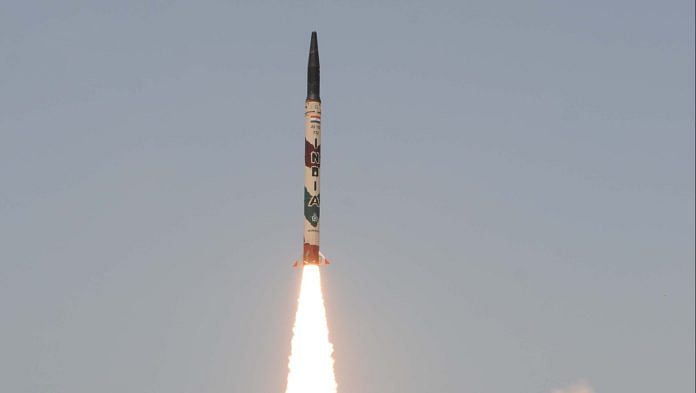Thank you dear subscribers, we are overwhelmed with your response.
Your Turn is a unique section from ThePrint featuring points of view from its subscribers. If you are a subscriber, have a point of view, please send it to us. If not, do subscribe here: https://theprint.in/subscribe/
When a ballistic missile, like Agni, re-enters on its way to the target, it moves at a speed in excess of Mach-10. Integrated Guided Missile Development Programme (IGMDP) was started by India in 1983. But India did not have a wind tunnel to test models at those speeds. When India approached the US to sell them a disused hypersonic wind tunnel used to develop their missiles, the US put a price tag of 7 billion US Dollars. At that time the entire GDP of India itself was only near 7 billion USD. The US was under what was called the Missile Technology Control Regime (MTCR) which prohibited the transfer of any technology related to guided missiles from any country that possessed the technology to any country that did not possess the technology. It was evident to the IGMDP core team that the US was not keen on India developing guided missile capabilities. Hence, other options were explored.
While India was weak in hardware, it was quite good in software and human resources. It was decided to build on these strengths. It was decided to use mathematical computation to test the warhead model instead of a hypersonic wind tunnel. That involved solving a set of equations known as Navier-Stokes flow equations for different boundary conditions. But, with the fastest computing facility available in
India at that time, it took 45 days to solve the equation for just one set of boundary conditions. Solutions of thousands of boundary conditions were needed to model a warhead reentering the atmosphere.
The fastest computer on sale in the world market at that time was Cray XP super computer which could immensely speed up the modeling of the warhead re-entry. But Cray XP was manufactured in the US. The core team knew that if they approached the US with honesty, their request would be turned down immediately. Hence, they came with what they thought was a clever ruse. They send a request to the US to buy a Cray XP computers for the scientific study of monsoon winds which involved modeling of large atmospheric air movements and solving Navier-Stokes flow equations.
Three members of the core team, Abdul Kalam, Sivathanu Pillai, and one more went to Washington to meet the Commerce Secretary of the US government. The Commerce secretary welcomed them because it was a good business deal which ran into a billion US Dollars. Who buys super computers that cost millions of US Dollars every day? But he wanted the Indian team to wait a couple of days to get clearances form the US government. Unknown to them, the Commerce Secretary alerted the CIA to get the real reason why the Indian team wanted the super computer because he did not trust this Indian team.
After two days, the Indian team invited the Commerce Secretary to a dinner in Waldorf Astoria – an expensive hotel – to hear his decision. The dinner went on. At the end of the dinner, the Commerce Secretary politely told the Indian team that the US would not sell the Cray XP to India. Abdul Kalam and the team were furious. They stormed out of the US with the determination that India would build the missile without any help from the US.
They came to India and again brain-stormed. They decided to build a super computer using what was known as parallel processing technology which used cheap off-the-shelf microprocessors which delivered super-computer speeds. Up came Centre for the Development of Advanced Computing or C DAC under Vijay Bhatkar. It developed a computer called Flosolver which is used only for solving Navier-Stokes equations. What more, it was built at one tenth of the cost of a Cray XP. With that India developed its missile re-entry technology and demonstrated its technology to the world without any help from any other country. Once it was done, India was out of the restrictions of MTCR. IGMDP concluded in 2008.
Now, the US wanted to sell to India its Cray super computer because it was a lucrative deal. India could not refuse because it was India which made the request in the first place for monsoon studies. So, a Cray super computer was eventually purchased by India and it lived its life in New Delhi simulating monsoon cloud movements with a resident American watchdog!
This saga was recounted by Dr. Sivathanu Pillai, who was one of the core team members, in a lecture at NIT-Trichy.
These pieces are being published as they have been received – they have not been edited/fact-checked by ThePrint


